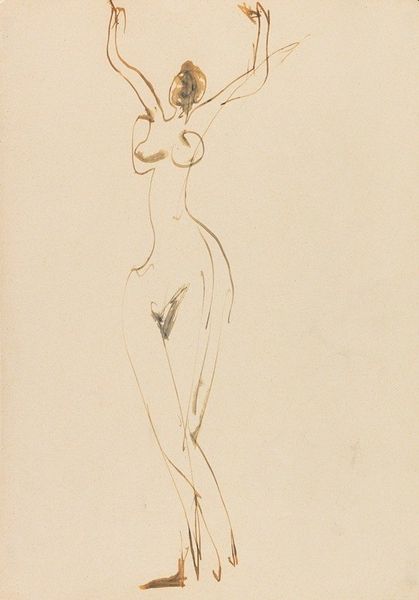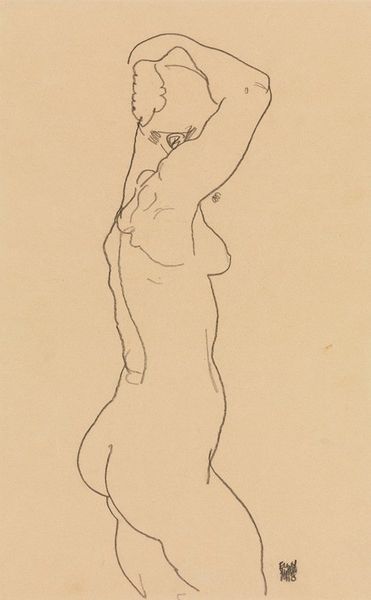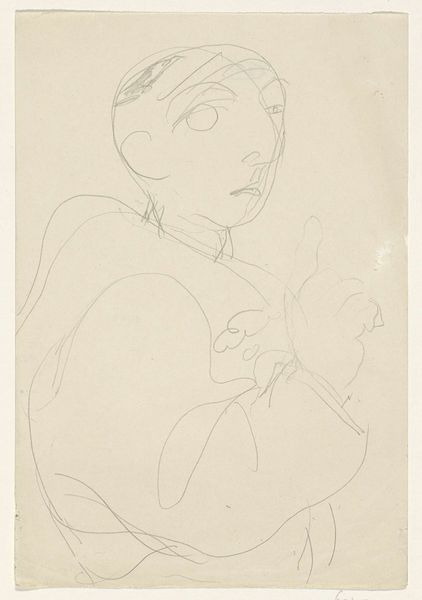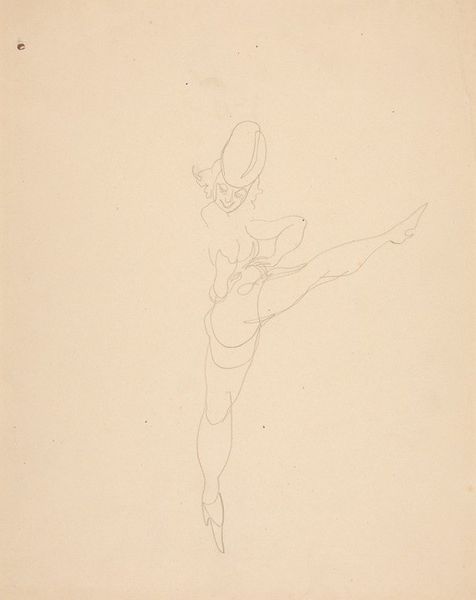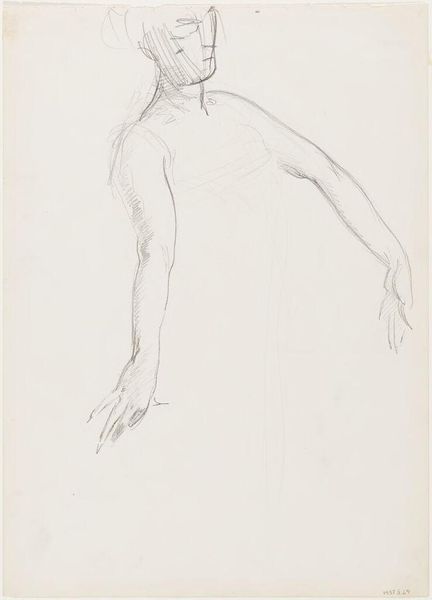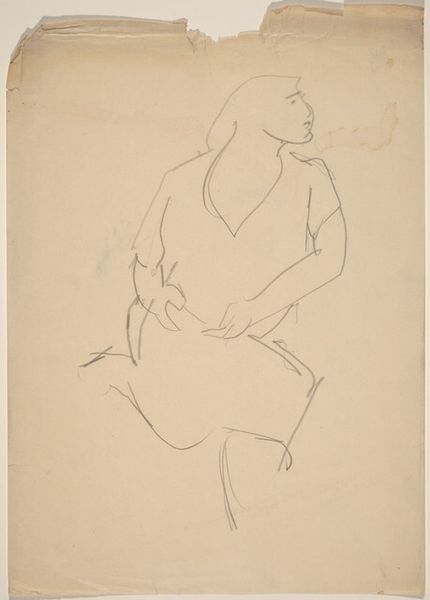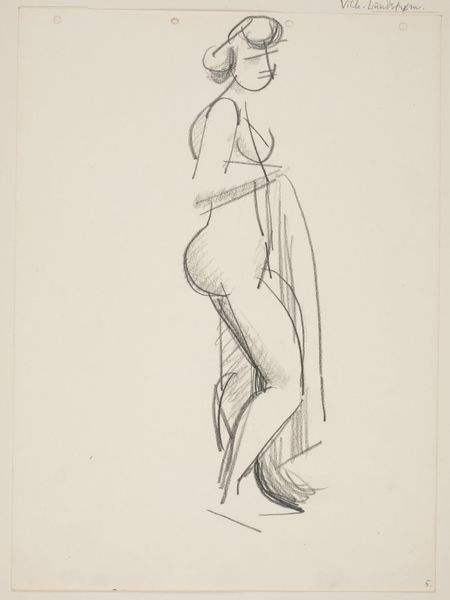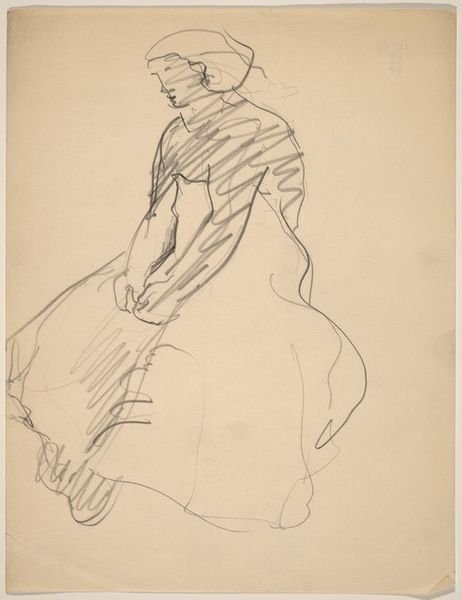
drawing, pencil
#
portrait
#
pencil drawn
#
drawing
#
pencil sketch
#
figuration
#
pencil drawing
#
pencil
#
portrait drawing
Copyright: Public Domain: Artvee
Curator: Immediately, I am struck by its ethereality; there's a delicate quality to this sketch. Editor: That’s a fitting reaction to Charles Demuth's pencil drawing, "Study for Costume Sketch," circa 1928. It exemplifies the artist's enduring interest in dance and theater during the Jazz Age. Curator: Dance feels right. The figure, almost floating, directs her gaze heavenward, clad in what seems to be a costume mid-flourish. It evokes a feeling of aspiration, of striving. The dancer appears caught between earthly bounds and spiritual release. Editor: Costume sketches, especially of dancers, weren’t just preparatory studies. They were vital documents within the cultural landscape of early 20th-century performance. The ballet, particularly, enjoyed a golden age then, and Demuth captured it. It represents both the individual artist's vision and the broader aesthetics of the era. Think of the Ballets Russes and its influence. Curator: Right! The ephemeral nature of dance, the fleeting gesture, finds its echo in the medium—a preliminary sketch rather than a finished piece. Does the lightness of the lines imply the lightness of being? Editor: Perhaps, but also, costume was never incidental. Clothing can be seen as second skin. Ballet costumes of that period were, more and more, designed to give an otherworldly feel to performances. A sketch such as this became the template for the stories that could be projected on stage. Curator: What do you make of the pose? I am no expert in dance, but her stance—with upturned chin and raised arms—suggests an offering or a yielding to something greater. Editor: A pose often denotes surrender but think about it also as the exact opposite, a claiming of oneself on stage in an environment rife with restrictions on women. Curator: A thought-provoking take. Thanks, as always, for illuminating the hidden depths of this piece. Editor: My pleasure. There’s always more to unpack, especially when we examine how art mirrors—or resists—the norms of its time.
Comments
No comments
Be the first to comment and join the conversation on the ultimate creative platform.


